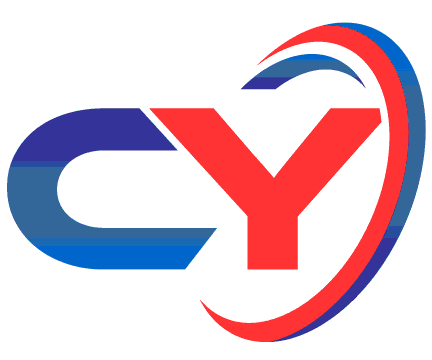If you’re a parent going through a difficult separation or divorce, finding a way to maintain a healthy relationship with your child may be a top priority. One potential solution that could be helpful in ensuring a safe and supportive environment for visits is non-professional supervised visitation. This article explores the concept of non-professional supervised visitation and how it can provide families with an alternative option for maintaining meaningful connections during challenging times. Find out more about how non-professional supervised visitation works and some of the benefits it can offer parents and children alike.

Benefits of Non-professional Supervised Visitation
Promotes Family Involvement
Non-professional supervised visitation offers a unique opportunity to promote family involvement in the lives of children. By allowing a non-professional visit supervisor, who may be a trusted family member or family friend, to oversee the visits, the child can maintain a sense of connection with their non-custodial parent or other significant relatives. This arrangement encourages a stronger bond between the child and their family, which is essential for healthy emotional development.
Emphasizes Informal Support
One of the key benefits of non-professional supervised visitation is the emphasis on informal support networks. Rather than relying solely on professional supervisors, the non-professional visitation model encourages the involvement of trusted individuals within the child’s existing social circle. These people, who may already have established relationships with the child and the family, can provide a more personalized and comfortable experience for the child during visitation. This informal support can enhance the child’s well-being and provide a sense of familiarity and security during supervised visits.
Reduces Costs
Non-professional supervised visitation can be a more cost-effective option for families compared to professional supervised visitation services. In professional settings, there may be hourly fees for the visit supervisor, administrative costs, and other expenses that can add up significantly over time. By utilizing non-professional supervisors, families can reduce the financial burden associated with supervised visitation, making it more feasible for families with limited resources to maintain contact while ensuring the child’s safety.
Offers Flexibility
Choosing non-professional supervised visitation can offer greater flexibility in scheduling visitation sessions. Professional supervised visitation centers often have limited availability and strict operating hours, which may not align with the schedules of the involved parties. However, with non-professional supervision, families can work out visitation schedules that suit their personal needs and obligations. This flexibility allows for more meaningful and consistent interactions between the child and their non-custodial parent or other significant relatives.
Maintains Privacy
Non-professional supervised visitation offers a level of privacy that may be preferred by some families. Professional supervised visitation centers typically have multiple families present during visitation hours, which can compromise privacy and make individuals feel uncomfortable or exposed. In contrast, non-professional supervised visitation allows families to choose a private location for the visits, such as their own homes or other familiar environments. This enhances the feeling of privacy and can create a more relaxed atmosphere for the child and the visiting family member.
Considerations for Non-professional Supervised Visitation
Suitability of the Visit Supervisor
When opting for non-professional supervised visitation, it is crucial to consider the suitability of the chosen visit supervisor. The visit supervisor should be someone who can maintain objectivity, prioritize the child’s best interests, and effectively ensure the child’s safety during the visitation sessions. Trust, reliability, and a proven ability to set appropriate boundaries are key qualities to look for in a visit supervisor.
Relationship Dynamics
The dynamics between the non-custodial parent or visiting family member and the visit supervisor should also be carefully considered. It is crucial to assess whether the visit supervisor can remain impartial and avoid favoritism or potential conflicts of interest. Open communication and a shared understanding of the visitation goals can help reduce any tension or potential biases that may arise within the relationship dynamics.
Safety Measures
Ensuring the safety of the child should always be the top priority during non-professional supervised visitation. Careful attention must be given to establishing safety measures that protect the child physically, emotionally, and mentally. This may involve setting rules and guidelines, conducting regular safety checks, and being prepared to address any potential risks or emergencies that may arise during the visits. Additionally, both the visit supervisor and the visiting family member should demonstrate a commitment to following these safety measures consistently.
Boundaries and Guidelines
Establishing clear boundaries and guidelines is crucial to maintain a healthy and appropriate visitation environment. The visit supervisor should have a thorough understanding of the visitation plan and any court orders or guidelines that pertain to the visitation arrangement. By clearly communicating these boundaries and guidelines to all parties involved, it helps to ensure that the child’s well-being and best interests are protected throughout the visitation process.
Legal Implications
Non-professional supervised visitation raises various legal implications that need to be considered. It is essential to consult with legal professionals to understand the legal requirements and implications associated with this type of visitation arrangement. Adhering to court orders, fulfilling legal obligations, and maintaining compliance with relevant laws and regulations is vital for all parties involved in non-professional supervised visitation.

Requirements for Non-professional Supervised Visitation
Training and Education
To ensure the safety and well-being of the child during non-professional supervised visitation, visit supervisors should undergo appropriate training and education. This training should cover topics such as child development, conflict resolution, communication skills, safety protocols, and relevant legal and ethical considerations. By equipping visit supervisors with the necessary knowledge and skills, they can provide effective oversight and support during visitation sessions.
Background Checks
Conducting thorough background checks on potential visit supervisors is an essential requirement for non-professional supervised visitation. These checks should include criminal record checks, child abuse registry checks, and reference checks to ascertain the suitability and trustworthiness of the visit supervisor. It is crucial to prioritize the safety and well-being of the child by ensuring that visit supervisors do not pose any potential risk.
Documentation
Documentation is an essential aspect of non-professional supervised visitation. Visit supervisors should maintain accurate and detailed records of each visitation session, including the date, time, duration, and any significant incidents or observations. This documentation can serve as valuable evidence of visitation compliance and provide a record of the child’s experiences during the visits. Proper documentation also ensures transparency and accountability in the visitation process.
Supervision Plans
Developing comprehensive supervision plans is necessary for non-professional supervised visitation. These plans outline the specific details of each visitation session, including the location, duration, visit supervisor’s responsibilities, safety measures, and any specific guidelines or restrictions. The supervision plans should be agreed upon by all parties involved and provide a clear roadmap for the visitation process.
Communication
Effective communication is vital for the success of non-professional supervised visitation. Visit supervisors should establish open lines of communication with the visiting family member, the custodial parent, and any other relevant stakeholders. Regular communication allows for the exchange of important information, clarifications, and updates, ensuring that all parties are aware of any changes or concerns related to the visitation arrangement.
Ensuring Safety in Non-professional Supervised Visitation
Risk Assessment
Before initiating non-professional supervised visitation, it is necessary to conduct a thorough risk assessment. This assessment should identify any potential risks to the child’s safety and well-being, including any history of domestic violence, substance abuse issues, or other concerning behaviors. By understanding the level of risk involved, appropriate safety measures and precautions can be implemented to mitigate these risks and protect the child.
Precautionary Measures
Implementing precautionary measures can help ensure the safety of the child during non-professional supervised visitation. This may include establishing rules around physical contact, communication boundaries, and appropriate behavior during the visits. Regular safety checks, such as assessing the environment for any potential hazards, can also contribute to maintaining a safe visitation environment.
Emergency Preparedness
Being prepared for potential emergencies is crucial in non-professional supervised visitation. Visit supervisors should receive training on recognizing and responding to emergency situations, including medical emergencies, natural disasters, or instances of violence. It is essential to have emergency contact information readily available and to establish protocols for handling such situations to minimize any harm or disruptions to the child.
Conflict Resolution
Non-professional supervised visitation may occasionally involve conflicts between the visit supervisor, the visiting family member, or other involved parties. Having effective conflict resolution strategies in place can help address and mitigate these conflicts. Visit supervisors should be trained in conflict resolution techniques to promote a peaceful and harmonious environment during visitation sessions. Encouraging open and respectful communication while maintaining the child’s safety and well-being as the top priority can help navigate and resolve conflicts effectively.
Observation and Reporting
Visit supervisors play a crucial role in observing and reporting any concerns or incidents that occur during non-professional supervised visitation. They should actively monitor the interactions between the child and the visiting family member, ensuring that the visit is conducted in a supportive and safe manner. If any potential issues arise, visit supervisors should promptly document and report them to the appropriate authorities or individuals, following the established communication protocols.

Supporting the Child’s Well-being
Child-Centered Approach
A child-centered approach is key to supporting the well-being of the child during non-professional supervised visitation. This involves prioritizing the child’s needs, emotions, and developmental progress throughout the visitation process. Visit supervisors and other involved parties should actively listen to the child, acknowledge their feelings, and engage in activities or conversations that align with their interests, age, and individual needs.
Establishing Routines
Consistency and routine can offer a sense of stability and predictability for the child during non-professional supervised visitation. Visit supervisors should work with the visiting family member and the custodial parent to establish regular schedules and routines that the child can rely on. These routines can include consistent times for meals, activities, rest periods, and transitions, helping the child feel secure and comfortable during the visits.
Emotional Support
Non-professional supervised visitation can be emotionally challenging for the child, especially if there has been a history of conflict or separation within the family. Visit supervisors should provide emotional support to the child by validating their feelings, offering reassurance, and providing a safe space for open expression of emotions. This support can help the child navigate any emotional difficulties they may experience during the visitation sessions.
Creating a Safe Environment
A safe environment is essential for the child’s well-being during non-professional supervised visitation. Visit supervisors should ensure that the visitation location is physically safe, free from any potential hazards, and appropriately childproofed. Emotional safety is equally important, and visit supervisors should be mindful of creating an environment where the child feels comfortable, respected, and free from any form of abuse or neglect.
Monitoring the Child’s Development
Non-professional supervised visitation provides an opportunity for visit supervisors to observe and monitor the child’s development over time. By paying attention to the child’s behavior, emotional responses, and interactions, visit supervisors can identify any potential areas of concern and communicate them to the appropriate professionals or involved parties. Monitoring the child’s development helps ensure that their well-being and best interests are continuously supported during the visitation process.
Ethical Considerations in Non-professional Supervised Visitation
Impartiality and Objectivity
Visit supervisors in non-professional supervised visitation must maintain impartiality and objectivity throughout the visitation process. It is crucial to prioritize the child’s best interests above any personal biases or preferences. Visit supervisors should approach their role with fairness, treating all parties involved with respect and avoiding any actions or decisions that may be influenced by personal opinions or relationships.
Maintaining Confidentiality
Respecting and maintaining confidentiality is vital in non-professional supervised visitation. Visit supervisors must handle any confidential information or disclosures made by the child, the visiting family member, or the custodial parent with the utmost care and discretion. They should only share information on a need-to-know basis and strictly follow legal and ethical guidelines regarding confidentiality.
Reporting Suspected Abuse
If a visit supervisor suspects any form of abuse or neglect during non-professional supervised visitation, they have a legal and ethical obligation to report it. Recognizing the signs of abuse, understanding the reporting process, and promptly taking action to protect the child’s well-being is essential. Visit supervisors should follow the appropriate legal and professional channels to ensure that the child is safeguarded from any potential harm.
Respecting Cultural Diversity
Non-professional supervised visitation may involve families from diverse cultural backgrounds. Visit supervisors must respect and appreciate the cultural values, traditions, and beliefs of the visiting family member and the child. This includes creating a visitation environment that is sensitive to cultural differences and ensuring that the child’s cultural identity is supported and celebrated during the visits.
Professional Boundaries
Visit supervisors in non-professional supervised visitation must establish and maintain professional boundaries with all parties involved. This includes setting clear expectations for their role, responsibilities, and limitations. Visit supervisors should avoid engaging in any activities or behaviors that may blur the boundaries and compromise their objectivity and effectiveness in ensuring the child’s safety and well-being.
Collaboration with Legal Professionals
Court Orders and Guidelines
Non-professional supervised visitation often operates within the framework of court orders and guidelines. Visit supervisors should familiarize themselves with the specific court orders and follow them diligently. This may involve understanding visitation schedules, restrictions, or other conditions set by the court. Compliance with court orders ensures legal integrity and promotes the child’s best interests.
Communication with Attorneys
Visit supervisors may need to communicate with the attorneys representing the involved parties during non-professional supervised visitation. This communication allows for the exchange of important information, clarification of legal requirements, and addressing any concerns that may arise throughout the visitation process. Working closely with legal professionals can help ensure that visit supervisors have a clear understanding of their responsibilities and any legal updates related to the visitation arrangement.
Providing Documentation
Accurate and comprehensive documentation is crucial in non-professional supervised visitation. Visit supervisors should keep detailed records of each visitation session and provide these records to the appropriate legal professionals when required. This documentation serves as evidence of visitation compliance, any incidents or concerns that arise, and any other relevant information that may be needed during legal proceedings.
Participating in Court Proceedings
In some cases, visit supervisors may be called upon to participate in court proceedings related to non-professional supervised visitation. This may involve providing testimony, answering questions, or presenting relevant documentation. It is important for visit supervisors to be prepared for these proceedings by understanding their role, responsibilities, and the legal implications associated with their involvement.
Navigating Challenging Situations
Non-professional supervised visitation may present challenging situations that require collaboration with legal professionals. This can include addressing non-compliance with court orders, resolving disputes between the involved parties, or handling any legal issues that may arise during the visitation process. Open and effective communication with legal professionals can help visit supervisors navigate these challenging situations while upholding the child’s best interests.
Community Resources for Non-professional Supervised Visitation
Support Groups
Support groups can be valuable resources for individuals involved in non-professional supervised visitation. These groups provide a supportive environment where visit supervisors can connect with others in similar roles, share experiences, and gain insights and advice. Support groups can offer emotional support, practical guidance, and a sense of community for those involved in the supervision of visitation.
Training Programs
Training programs specifically designed for non-professional supervised visitation can provide visit supervisors with the knowledge and skills necessary to fulfill their responsibilities effectively. These programs cover topics such as child development, safety protocols, conflict resolution, and legal and ethical considerations. By participating in these training programs, visit supervisors can enhance their capabilities and ensure the child’s well-being during visitation sessions.
Parenting Education
Parenting education programs can benefit both the visiting family members and the custodial parents involved in non-professional supervised visitation. These programs provide valuable insights into effective parenting techniques, communication strategies, and child development. By equipping the parents with these skills, parenting education programs contribute to the creation of a supportive and nurturing visitation environment.
Community Organizations
Community organizations dedicated to supporting families and children can offer valuable resources for non-professional supervised visitation. These organizations may provide guidance, referrals, and access to additional services that can enhance the visitation experience and support the well-being of the child. Non-professional visit supervisors can benefit from connecting with these community organizations to gain a broader understanding of available resources and support networks.
Referral Services
Referral services can assist families involved in non-professional supervised visitation in finding suitable visit supervisors. These services help match families with individuals who meet the necessary requirements, such as background checks, training, and experience. By utilizing referral services, families can ensure that they are working with visit supervisors who have been vetted and meet the established qualifications, contributing to a safer and more effective visitation arrangement.
Challenges and Limitations of Non-professional Supervised Visitation
Lack of Professional Oversight
Non-professional supervised visitation lacks the professional oversight and expertise provided by trained and experienced professionals. Visit supervisors are typically individuals from the child’s existing social circle and may not have specialized training or knowledge in areas such as conflict resolution, child development, or safety protocols. This limitation can potentially impact the effectiveness and safety of the visitation process.
Potential for Biased Supervision
Non-professional supervised visitation may introduce the potential for biased supervision. Visit supervisors who have personal relationships with the visiting family member or the custodial parent may be influenced by their existing dynamics and personal opinions. This bias can compromise the objectivity and impartiality required for effective supervision. It is essential for visit supervisors to consistently prioritize the child’s best interests and maintain professional boundaries.
Inadequate Training
Non-professional visit supervisors may not receive the same level of training as professional visit supervisors. This lack of training can limit their ability to effectively handle challenging situations, recognize potential risks, or address the specific needs of the child and the involved parties. To mitigate this challenge, it is crucial to ensure that visit supervisors receive adequate training and ongoing support to enhance their knowledge and skills.
Difficulty in Enforcing Rules
Enforcing rules and guidelines can be challenging in non-professional supervised visitation. The visit supervisor may face difficulties in maintaining control and monitoring the interactions between the child and the visiting family member. Without the authority or training of a professional supervisor, visit supervisors may struggle to address non-compliance or handle disciplinary measures effectively. It is important to establish clear expectations and provide additional support or training for visit supervisors to overcome this limitation.
Ensuring Consistency
Maintaining consistency can be a challenge in non-professional supervised visitation. Visit supervisors may have varying schedules and availability, which can result in inconsistency in visitation sessions. Inconsistent visitation can disrupt the child’s routine and impact their overall well-being. It is crucial to establish clear communication and collaboration among all parties involved to ensure consistent visitation schedules and support the child’s stability and emotional security.
Conclusion
Non-professional supervised visitation offers unique benefits and considerations when compared to professional supervised visitation services. It promotes family involvement, emphasizes informal support networks, reduces costs, offers flexibility, and maintains privacy. However, certain considerations should be taken into account, such as the suitability of the visit supervisor, relationship dynamics, safety measures, boundaries and guidelines, and legal implications.
Non-professional supervised visitation requires specific requirements, including training and education, background checks, documentation, supervision plans, and effective communication. Ensuring safety in non-professional supervised visitation involves risk assessments, precautionary measures, emergency preparedness, conflict resolution, and observation and reporting.
Supporting the child’s well-being requires a child-centered approach, establishing routines, offering emotional support, creating safe environments, and monitoring the child’s development. Ethical considerations include impartiality and objectivity, maintaining confidentiality, reporting suspected abuse, respecting cultural diversity, and maintaining professional boundaries.
Collaboration with legal professionals is essential in non-professional supervised visitation, including adherence to court orders and guidelines, communication with attorneys, providing documentation, participating in court proceedings, and navigating challenging situations.
Community resources, such as support groups, training programs, parenting education, community organizations, and referral services, can provide valuable support and guidance for non-professional supervised visitation. However, there are also challenges and limitations to be aware of, such as the lack of professional oversight, potential for biased supervision, inadequate training, difficulty in enforcing rules, and ensuring consistency.
Ultimately, the decision to pursue non-professional supervised visitation should consider the individual circumstances and prioritize the child’s best interests. Continuous evaluation and improvement, along with the exploration of alternative supervision options, can contribute to the ongoing enhancement of the visitation arrangement. Above all, ensuring the child’s safety, well-being, and overall development should remain the guiding principles in any form of supervised visitation.
